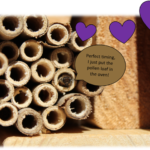Tree Fruit
As of March 2022, Indiana has one known county with a confirmed Spotted Lanternfly (SLF) population: Switzerland County (Figure 1). Penn State University has created a SLF egg hatch prediction map that estimates the emergence of the first SLF instar based on temperature conditions (Figure 2). Please note: this map does not show where SLF[Read More…]
Depending on where you are in the state, your fruit trees may be nearing the end of petal fall or already beginning fruit set! This is an important time to pay close attention to your pheromone-baited monitoring traps for captures of codling moth (Figure 1) that you are all likely familiar with. You’ve likely already[Read More…]
We were all hoping it would happen later, but unfortunately the spotted lanternfly (SLF) (Lycorma delicatula) (Figure 1), an invasive planthopper with a piercing-sucking feeding strategy, was officially detected in Vevay, Indiana (Switzerland County) for the first time in July 2021. You can see pictures and read more about the detection at the Indiana Department[Read More…]
Adapted from IDNR Press release and Purdue Landscape Report The Spotted Lanternfly (SLF) has been found in Indiana A homeowner in Vevay, IN contacted DNR’s Division of Entomology & Plant Pathology (DEPP) last week with a picture of a red immature stage near their home. DEPP staff surveyed the site and discovered an infestation[Read More…]
I am a bit late on the topic of bees for fruit pollination, especially tree fruit, but I wonder how many readers use or maintain spring mason bees for pollination of tree fruits? If not for pollination, then perhaps just for fun? (Figure 1). If not, you might consider this for next season! Those who[Read More…]
Spring temperatures and the season so far It seems like it’s been warm and that we’re way ahead of normal. But the data paint a slightly different picture. First, let’s not talk too much about “normal”. In the last 10 years or so that I’ve been plotting these data, EVERY year has been warmer than[Read More…]
A natural wonder will occur in 15 states this year: the emergence of the Brood X, 17-year periodical cicadas! Also known as “17-year or 13-year locusts” the last mass emergence of these insects occurred in 2004. Now, 17 years later, the immature cicadas will emerge from the ground, molt one last time to gain wings,[Read More…]
With many orchards suffering severe frost damage last year, our expectation is for very heavy flowering this spring. We’ll talk more about thinning next time, but it’s a pretty safe prediction that flowering will be heavy and so growers will really need to have their act together regarding thinning. So make sure now that your[Read More…]
Warm temperatures over the last week or so have accelerated growth rapidly. In Lafayette, apples are nearing green tip, and strawberries at full bloom. Blackberries are pushing half-inch green. Further south in the state, temperatures are in the mid 70’s, apricots are in full bloom and peaches not quite at pink (thanks to Applacres for[Read More…]







